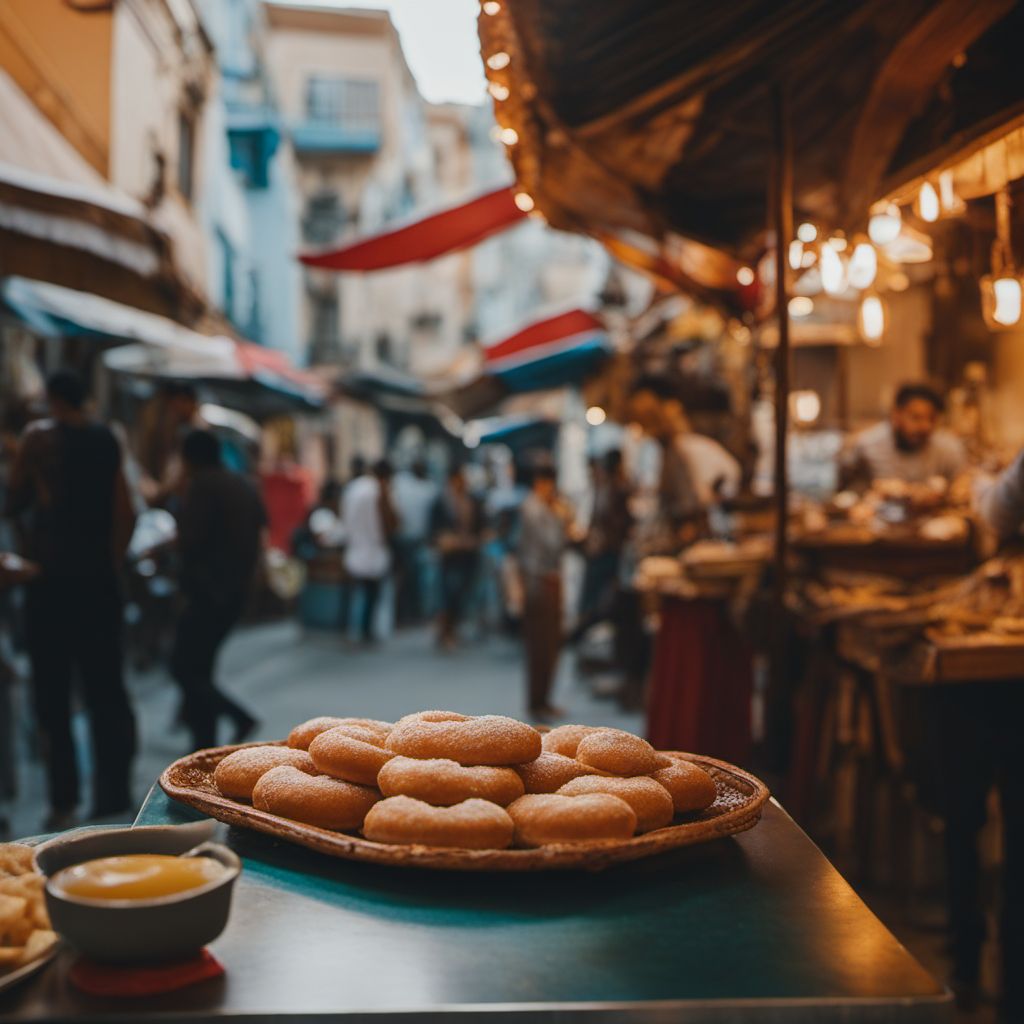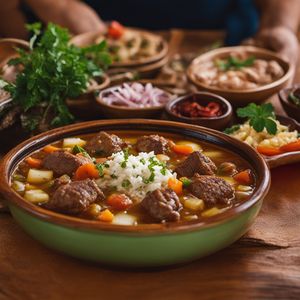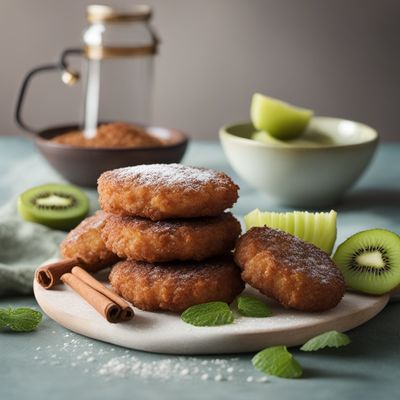
Dish
Bambalouni
Bambalouni is made by mixing flour, yeast, salt, and water to form a dough. The dough is then fried in hot oil until it is golden brown. The dough balls are then dusted with powdered sugar and served warm. Bambalouni can also be filled with a variety of sweet or savory fillings, such as Nutella, jam, or cheese.
Origins and history
Bambalouni originated in Tunisia and has been a popular street food in the country for centuries. The dish is typically sold by street vendors and is a staple at Tunisian markets and festivals.
Dietary considerations
Bambalouni contains gluten and is not suitable for those who are gluten-free or have a wheat allergy.
Variations
There are many variations of Bambalouni, including adding spices such as cinnamon or cardamom to the dough mixture to add extra flavor. Some recipes also call for the addition of mashed potatoes to the dough mixture to make the dough balls more tender.
Presentation and garnishing
When making Bambalouni, it is important to let the dough rise for at least an hour before frying to ensure that the dough balls are light and fluffy. It is also important to use a deep fryer or a heavy-bottomed pot to ensure that the dough balls cook evenly and are crispy on the outside. Bambalouni is typically served on a plate or platter and garnished with a dusting of powdered sugar and a sprinkle of cinnamon.
Tips & Tricks
Bambalouni can be filled with a variety of sweet or savory fillings, such as Nutella, jam, or cheese, to add extra flavor and texture.
Side-dishes
Bambalouni is typically served as a standalone dish, but it can be accompanied by fresh fruit, yogurt, or a savory dip such as hummus. It pairs well with a variety of drinks, including coffee, tea, or a sweet dessert wine.
Drink pairings
Bambalouni pairs well with coffee, tea, or a sweet dessert wine.
Delicious Bambalouni recipes
More dishes from this category... Browse all »

Akoumia
Greek cuisine

Ananasbeignets
French cuisine

Apfelradln
Austrian cuisine

Appelbeignet
Dutch cuisine

Bacio di Pantelleria
Italian cuisine

Baked Bananas Gabon
Gabonese cuisine

Buñuelos de yuca
Colombian cuisine

Calas
American cuisine
More cuisines from this region... Browse all »

Algerian cuisine
Spicy, Savory, Rich, Bold, Aromatic

Berber cuisine
Spicy, Savory, Aromatic, Bold, Earthy

Egyptian cuisine
Spicy, Savory, Aromatic, Bold, Earthy

Libyan cuisine
Spicy, Savory, Aromatic, Bold, Earthy

Mauritanian cuisine
Spicy, Savory, Aromatic, Bold, Earthy

Moroccan cuisine
Spicy, Sweet, Savory

Sudanese cuisine
Spicy, Flavorful, Hearty, Aromatic

Western Saharan cuisine
Spicy, Flavorful, Hearty, Aromatic

